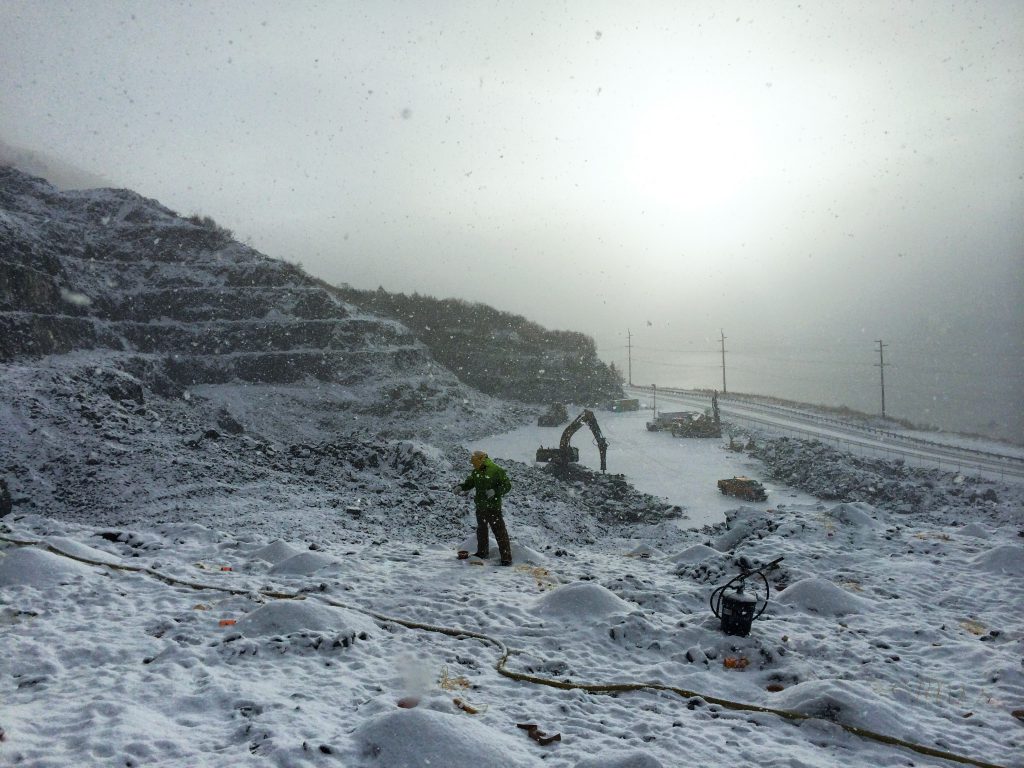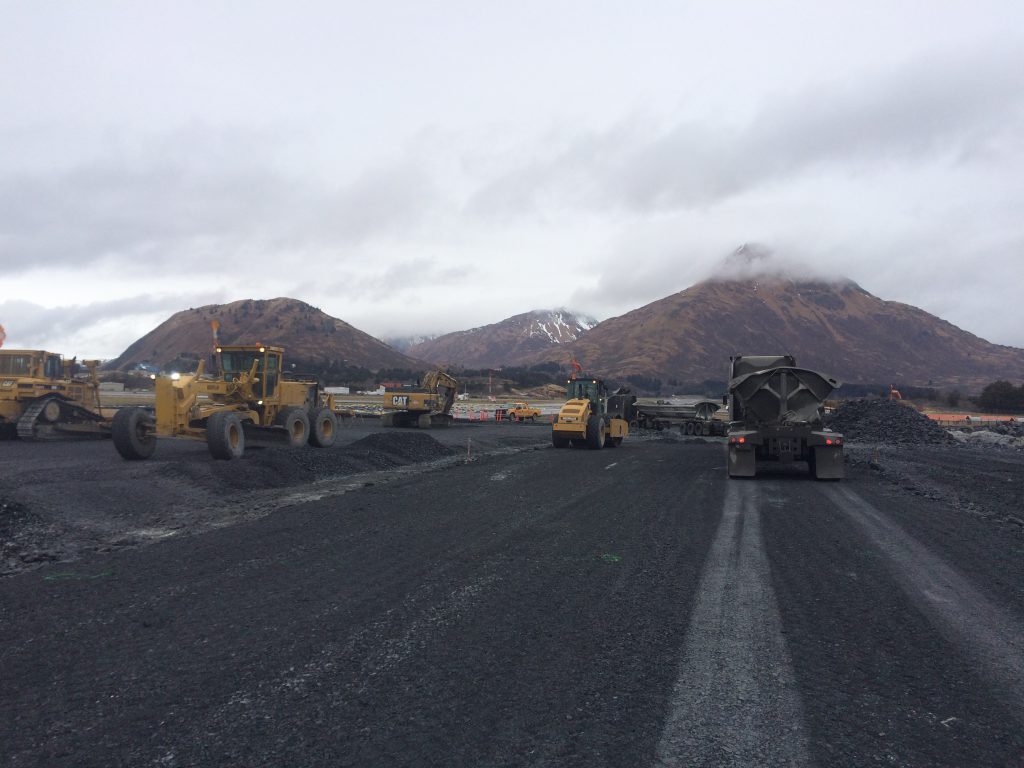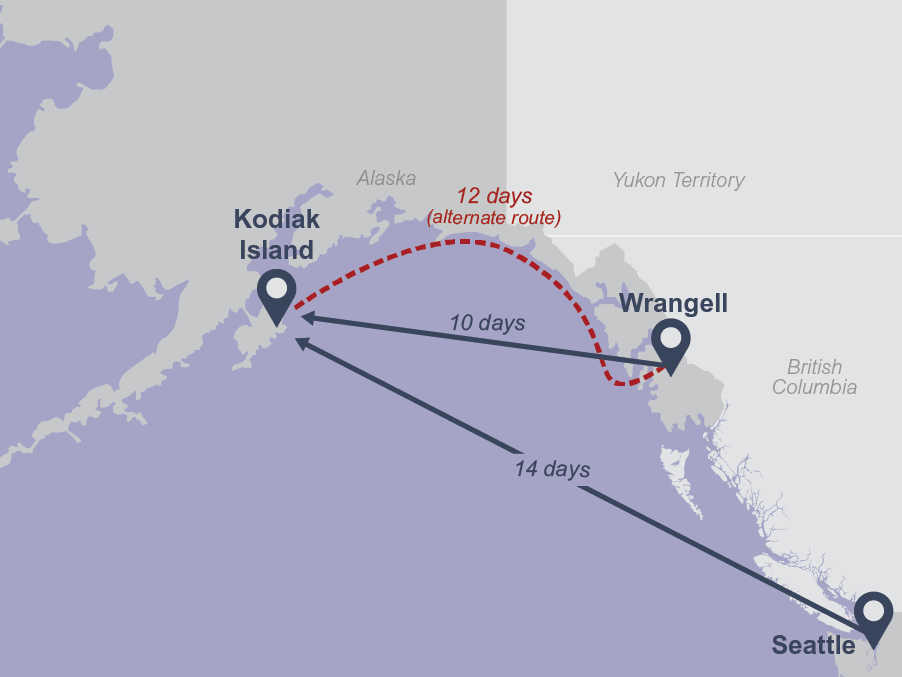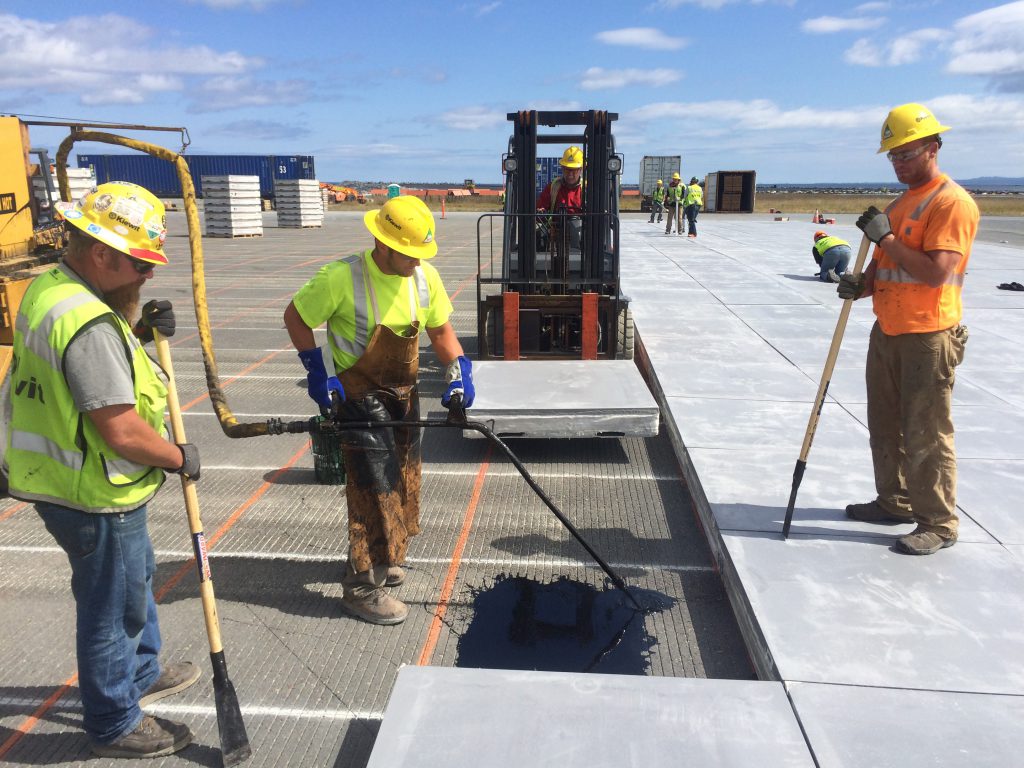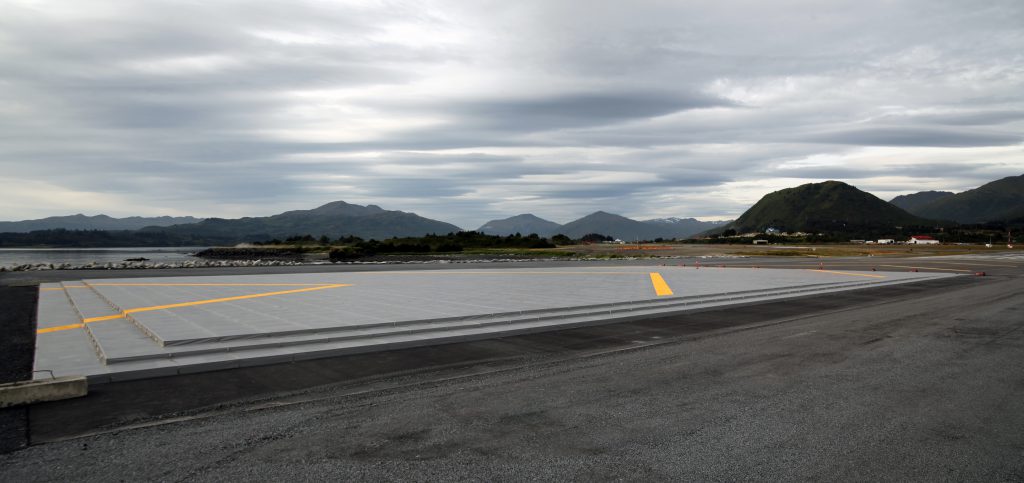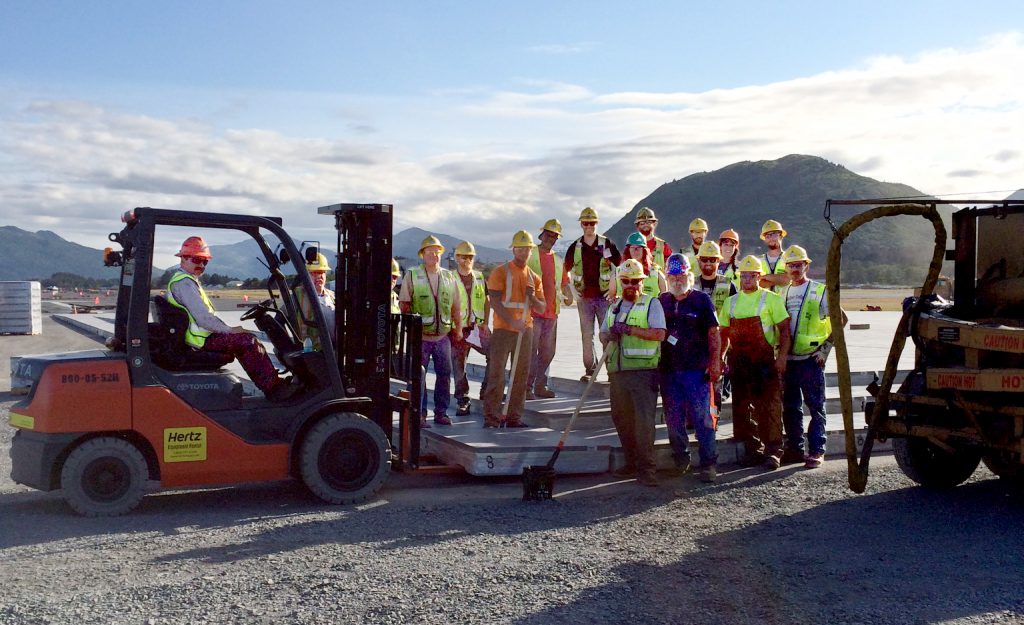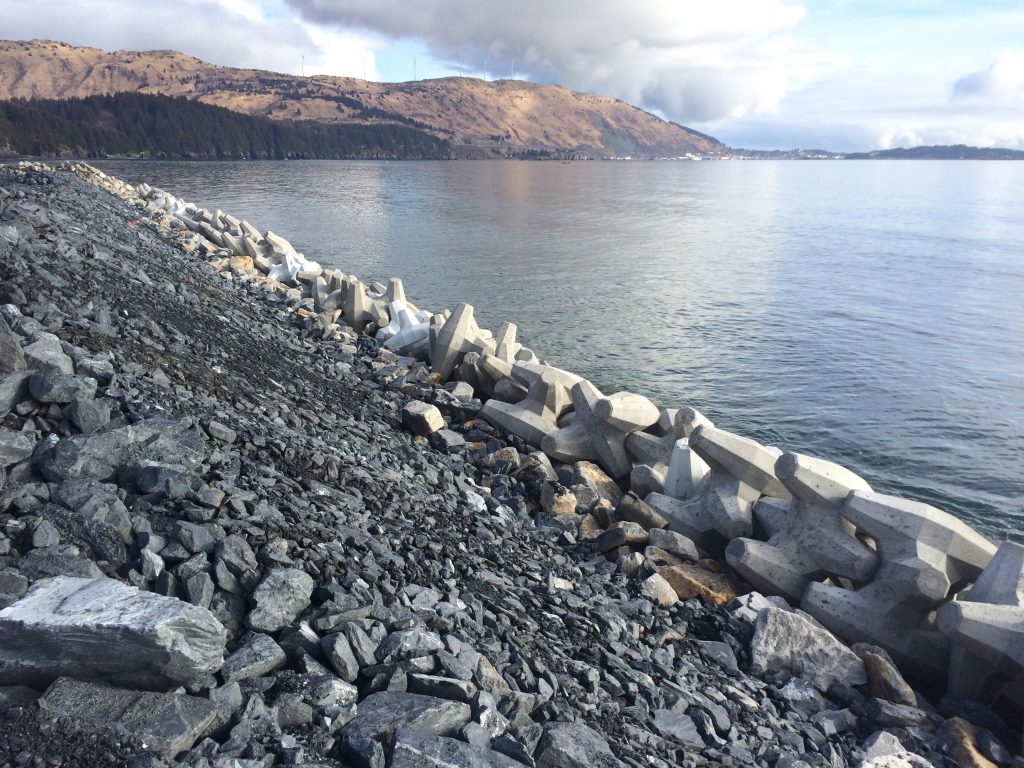Located 30 miles south of the Alaskan Peninsula, Kodiak Island’s landscape includes mountains, rivers, lakes and oceanfront. Home to the world’s largest species of brown bear — appropriately named the Kodiak bear — it’s a popular destination for wildlife viewing, hiking, fishing and other outdoor activities.
On the southern side of the island, Kodiak Airport treats locals and visitors alike to spectacular views as they arrive or depart. But the airport’s footprint on the island — and more specifically the alignment of its runways — made runway safety a cause for concern as Federal Aviation Administration (FAA) standards changed. Like other airports with limited land resources, the FAA required that the Alaska Department of Transportation & Public Facilities (ADOT&PF) use a unique design solution to ensure runway safety areas (RSA) could safely support airport operations.
Arriving at a solution
According to the FAA, a runway safety area is “a defined surface surrounding a runway prepared or suitable for reducing the risk of damage to airplanes in the event of an undershoot, overshoot or other excursion from the runway.”1 In the ‘90s, updated regulations required all RSAs extend 1,000 feet beyond the end of the runway. Many airports built prior to the ruling — including Kodiak, in operation since 1940 — were restricted by limited land resources and unable to meet the standard without encountering significant environmental concerns or extreme costs.2
Following a study, the FAA selected Zodiac Arresting Systems’s engineered materials arresting system (EMAS) as a solution for impacted airports.3 An EMAS bed placed at the end of a shorter RSA can stop a plane traveling from 40 to 70 knots safely and with limited damage to the aircraft.
To meet these requirements at Kodiak Airport, ADOT&PF contracted Kiewit to complete improvements.
Kiewit’s contract included extending two RSAs by 600 feet into the Gulf of Alaska and installation of two EMAS beds; building new taxiways and service roads to access the longer runways; upgrading lighting systems; and rehabilitating the Devil’s Creek culvert located beneath the runways.
In order to collect all the resources needed to complete the runway extensions, Kiewit managed drill-and-shoot operations at Green Mountain Quarry on Kodiak Island and mining at the Wrangell Harbor Quarry in southeast Alaska.
“More than 1.2 million tons of borrow came from the island and 63,000 tons of armor stone were barged in 800 nautical miles from Wrangell,” said Project Manager Dustin Lehman. “The remaining 21,500 tons of armor and 54,000 tons of underlayer were purchased from the north side of Kodiak Island and barged to the project. Other materials, including the concrete armor units and EMAS blocks, were manufactured and barged to the site.”
Coordinating deliveries to the remote location required detailed planning.
“We knew the distance and weather conditions on the Gulf of Alaska could complicate our delivery schedule,” said Lehman. “To avoid any setbacks, we ordered supplies well in advance of the required date and worked with barging companies to ensure everything left from a southern port with enough time to reach the project.”
Crews endured Alaska’s winter conditions during drill-and-shoot operations at Kodiak Island’s Green Mountain Quarry.
On a remote project, logistics get complicated. In poor weather, barges hug the coast, meaning shipments of armor stone from Wrangell would take approximately 12 days to arrive compared to the 10 it takes on a direct route across the Gulf of Alaska to Kodiak. Equipment and material shipments from Seattle and southern ports took approximately 14 days and required precise advanced planning.
A deadline in mind
Following a four-week winter shutdown, work ramped up in February 2015 with an important milestone to achieve.
“The schedule hinged on placing the EMAS beds before winter weather set in,” said Lehman. “That meant we needed to complete the borrow, subbase, aggregate base, armor stone and concrete armor unit placement operations at all runway locations, as well as runway electrical installation and paving, by early summer.”
Working diligently alongside the Kiewit staff were many craft workers who’d become familiar with the company on other projects in the region.
“We had a great, loyal craft team,” said Superintendent Nik Schriener. “There were about 60 field workers on the job and many had worked with us on recent projects like the Northern Rail Extension and Prince of Wales projects. We were fortunate to have crews familiar with the seasonal conditions and logistics of projects in this region.”
Careful coordination
Kiewit worked closely with the airport’s stakeholders to manage construction successfully amid flight operations. Alaskan Airlines and smaller local and regional carriers collectively operate 20 to 35 flights from the airport daily. The U.S. Coast Guard, which leases the airport property to ADOT&PF, uses Kodiak as a base for Search and Rescue (SAR) missions and training exercises.
“It was paramount that our construction didn’t interrupt flight operations,” said Schriener. “To help coordinate, we hired a liaison to communicate with the airport tower.”
The liaison let the team know when runways were clear for equipment to cross and when they needed to hold short to provide ample space for aircraft. Having just one person on the radio with the tower also limited chatter during arrivals and departures. Airport officials noticed the team’s effort.
“Kiewit always looked out for the stakeholders who operate from the Kodiak Airport,” said Robert Greene, Kodiak Aleutian district superintendent with ADOT&PF.
Finishing strong — and early
By June, the borrow, subbase, aggregate base, armor stone and concrete armor units were in place and installment of runway and taxiway lighting was underway. Paving operations followed and set the stage for setting the EMAS beds — a total of 4,788 individual blocks — beginning in July.
The final EMAS block was placed on Aug. 26, 2015 — before winter’s arrival and in advance of the FAA and Congress’s December 2015 deadline for RSA improvements. Should a pilot flying into or out of Kodiak Airport ever experience complications on the runway, EMAS will essentially serve as a safety net.
“The tires of an aircraft running off the runway crush the light-weight concrete inside the blocks of the EMAS bed,” said Zodiac Arresting Systems’s Hugh DeLong, the company’s lead engineer for Kodiak Airport’s EMAS beds. “That crushing takes the energy and momentum away from the aircraft and slows it down. Passengers and crews only experience a sudden stop.”
Rehabilitation of the 800-foot long Devil’s Creek box culvert was finished in October. It marked successful completion of a project that, like Kiewit projects past and present of similar size and scope, provided an opportunity for a relatively young team to apply their experiences from previous jobs managing their own work.
“Kiewit has always realized the importance of providing the right opportunities for our people to take on new challenges and grow as individuals,” said Sponsor Justin O’Brien. “Dustin and his team were well prepared to manage the Kodiak project.”
Preparation came not only in the form of learning from past responsibilities, but in coaching and mentoring from senior managers like O’Brien. Early on, O’Brien spent two to three days on site each week, working with Lehman and providing feedback.
“I wasn’t on the island to manage the job, that was Dustin’s responsibility,” said O’Brien. “I was there to ensure he had support and to develop a young man into a leader.”
Even now that the project is complete, O’Brien says he still enjoys telling others about the project, especially the team’s successes managing complicated logistics in a remote location.
“It’s very gratifying to reflect on what they were able to accomplish and the impact it will have on the continuous development of our business and their personal careers,” he said.
If a plane overruns or undershoots a runway, the lightweight concrete in the EMAS bed will crush beneath the plane’s weight and bring it to a stop. The plane is then towed out and only the affected blocks must be replaced.
Sources
1 Runway and Taxi Safety Areas FAQ; Federal Aviation Administration Southern Region Airports Division
2 National Runway Safety Plan 2015-2017; Federal Aviation Administration
3 Fact Sheet – Engineering Material Arresting System (EMAS); Federal Aviation Administration
